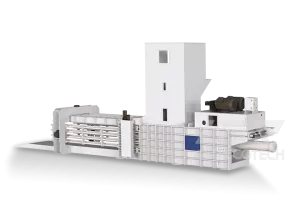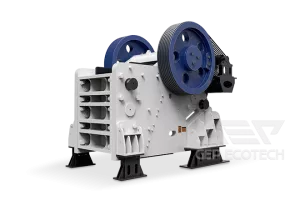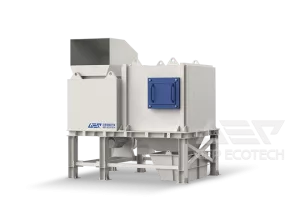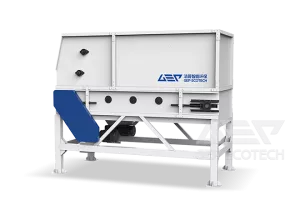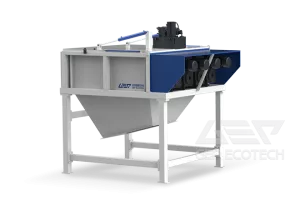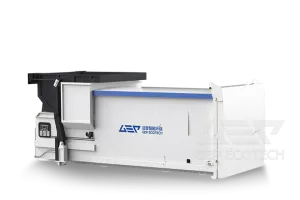An RDF (Refuse-Derived Fuel) line for bulky municipal waste is a specialized waste processing system designed to convert large and non-homogenous waste, typically generated from households and businesses, into a more uniform and energy-rich fuel. This technology aims to optimize waste management and utilize the energy potential of bulky municipal waste while reducing its environmental impact. Below, we will explore the key components and processes involved in an RDF line for bulky municipal waste.
Conveyed to the Shear Shredder for Shredding
GEP ECOTECH's RDF Line for Bulky Municipal Waste(Click to View Project Details)
Waste Reception and Sorting
The first step in an RDF line is the reception and sorting of bulky municipal waste. Waste trucks unload the mixed waste onto a tipping floor or conveyor belt. Here, manual or mechanical sorting takes place to remove hazardous or non-combustible materials, such as metals, glass, and large non-recyclable items.
Shredding and Size Reduction
After sorting, the bulky waste is fed into a shredder or size reduction equipment. The shredding process breaks down the waste into smaller, more manageable pieces, improving its handling and increasing the surface area for subsequent processing.
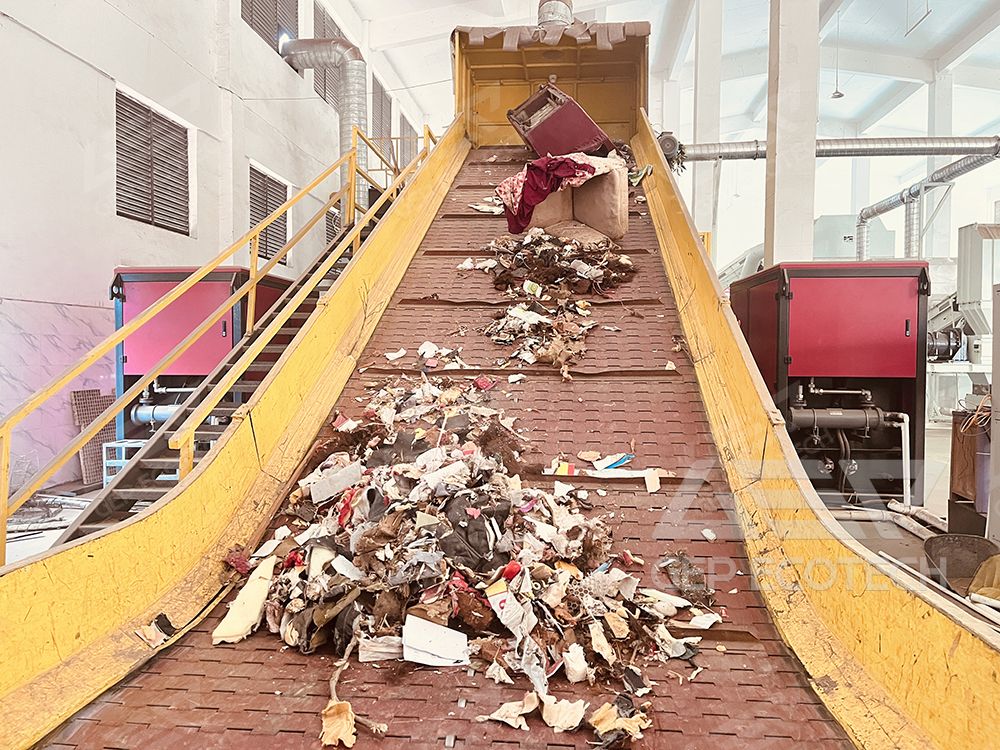
Conveyed to the Shear Shredder for Shredding
Magnetic Separation
Once shredded, the waste passes through a magnetic separator to remove ferrous metals like iron and steel. These metals can be recycled separately, reducing the amount of waste sent to landfill or incineration.
Air Classification
In the next step, an air classifier is used to separate lighter materials, such as plastic films and paper, from heavier ones. The lighter materials are separated and collected for further processing or recycling.
Biological Drying (Optional)
Some RDF lines include a biological drying step, where the waste is subjected to controlled aerobic or anaerobic decomposition. This process reduces the moisture content of the waste, enhancing the calorific value of the final RDF product.
RDF Production and Baling
The remaining waste undergoes further processing to produce the RDF. The RDF is formed by compressing the waste into dense and uniform fuel pellets or bales. These compacted RDF materials have a higher energy content, making them suitable for use as a fuel source.
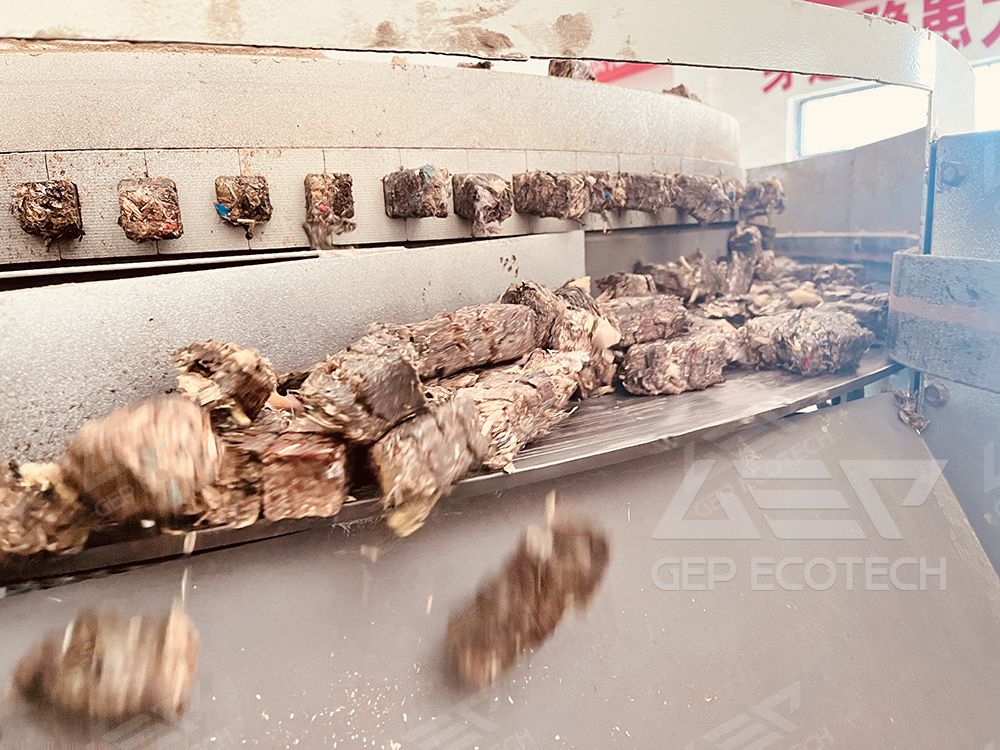
RDF Pelleting Mill
Quality Control and Analysis
Throughout the RDF line, quality control measures are in place to ensure the produced RDF meets the required specifications for energy content, moisture levels, and combustion characteristics.
Energy Utilization
The final RDF product can be utilized in various applications, depending on its energy content and characteristics. Common uses include:
- Feeding into waste-to-energy (WtE) plants for combustion and electricity generation.
- Utilization in industrial processes as a substitute for fossil fuels, reducing greenhouse gas emissions.
- As a fuel source for cement kilns, reducing the reliance on traditional fossil fuels and improving sustainability.
An RDF line for bulky municipal waste plays a crucial role in waste management and sustainable energy production. By converting bulky waste into a more uniform and energy-rich RDF product, this technology reduces the volume of waste sent to landfills, conserves natural resources, and contributes to renewable energy generation. As countries and municipalities continue to seek more sustainable waste management solutions, RDF lines for bulky municipal waste are expected to gain further prominence in the effort to create a circular and resource-efficient society.


